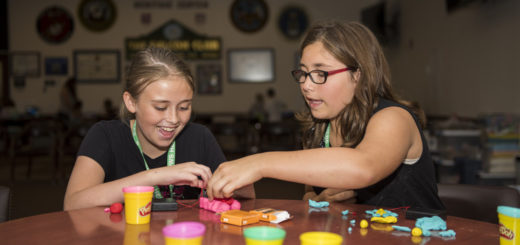Dyslexia Resource Guide for Ohio Families (Text and Audio Versions Available in 6 languages)
Download PDF: Arabic | Chinese Simplified | English | Nepali | Somali | Spanish
Audio Versions: 🔊 Arabic | Mandarin | Nepali | Somali | Spanish

As many as 1 in 5 people have dyslexia worldwide!
What is dyslexia?
Dyslexia is one of the most common learning disabilities. People with dyslexia have many strengths, but have unexpected trouble learning to read. These difficulties are not related to a person’s intelligence or motivation. Children with dyslexia can learn to read. Families, early childhood teachers, or kindergarten teachers are often the first to notice children having difficulty with talking or learning at school. It is important to pay attention to potential signs that a child may have dyslexia. Children with dyslexia can show any mix of signs. While any one sign does not necessarily mean your child has dyslexia, it is important to talk with your child’s teachers if you have concerns.
What are signs that my child might have dyslexia?
Preschool
- Delay in learning to talk
- Pronouncing words can be a challenge (“pusgetti” for “spaghetti”)
- Persistent “baby talk”
- Remembering nursery rhymes and chants can be a challenge
- Difficulty naming letters/numbers
- Telling stories that are hard to follow
K-2nd Grade
- Doesn’t associate letter or letter combinations with sounds
- Sounding out simple words like cat, map, and nap is a challenge
- A history of reading problems in parents or siblings
- Reads slowly, reads words incorrectly or reads without expression
- Confusion with pairs such as before/after, right/left, etc.
3rd-5th Grade
- Often guessing words because they cannot sound them out
- Better at answering questions about text if it is read aloud
- Difficulty pronouncing words correctly (e.g., “mazigine” instead of “magazine”)
- Writing can be a challenge, with frequent spelling mistakes
- Skipping or misreading common short words
6th-12th grade
- Reads slowly and becomes frustrated; doesn’t like to read
- Often skips over small words or leaves out part of longer words when reading aloud
- Prefers multiple choice questions over fill-in-the-blank or other questions with short answers
- Learning a foreign language can be a challenge
- Memorizing facts, lists or directions can be tough
How does a child in Ohio get screened for signs of dyslexia?
During the 2023-24 school year, Ohio schools will screen all children for dyslexia warning signs in grades K-3. Families (or a teacher with family permission) can request a dyslexia screening in grades 4-6 as well. After the 2023-2024 school year, all Kindergarten students will be screened for dyslexia each year, and in grades 1-6, screenings also must be done if they are requested by a family (or by a teacher with family permission). If your child is screened and the school identifies signs of dyslexia, you will receive a communication from your child’s school. Your child will then be given a more in-depth screener, and their teachers will begin providing additional support in the classroom. This is called “structured literacy instruction.”
If you would like to request a screening from your child’s school to see if your child is at-risk for dyslexia, visit the Ohio Statewide Family Engagement Center’s website to find a Sample Screening Request Letter.
Schools will not provide a diagnosis of dyslexia. Diagnosing dyslexia requires testing by a qualified provider such as a neuropsychologist or speech-language pathologist. Your school might have local recommendations.
What will change at school if my child has a dyslexia diagnosis or is suspected of having dyslexia?
If your child is diagnosed with dyslexia, or is suspected of having dyslexia, the school will provide in-classroom support for academic subjects. Children with dyslexia continue to learn in the same classroom they were in before. You will be notified about what the school is doing to support your child with learning.
Many students with dyslexia, or who are suspected of having dyslexia, will not require special education services. If they do need additional support and are still having difficulties after receiving specific and targeted instruction, a request for formal special education evaluation should be made. Families can start the special education process by sending a written request to their child’s teacher and/or principal. Visit the Ohio Statewide Family Engagement Center’s website to find a Sample Evaluation Request Letter. The Ohio Department of Education has an Evaluation Roadmap for Families, which is a timeline of the steps involved in starting the special education process.
My child is struggling. How do I help them at home?
It is the school’s job to provide a free and appropriate public education to your child, and you and your family are important partners with your child’s school. You can ask your child’s teachers for ideas for what you can do at home, consistent with what the school is teaching your child.
What should I tell my child about dyslexia?
Every family will take a different approach to talking with their child about dyslexia. Here are some ideas for you. It can be inspiring for kids and adults to hear examples of successful people who have dyslexia.
Staying positive is important. You can say, “Our brains are like muscles, and we need to practice using them to help them grow. I love you, I am here to help, and so are your teachers.”
Or, you could say, “You know how you’ve been having a hard time in school? I’m going to talk to your teachers about that. We all learn differently. We’re going to find out how you learn best.” Or, “Dyslexia means your brain can have a hard time matching letters with sounds. Your teacher is going to work with you on the things that you’ve been having a hard time with, and we can try some of those same things at home together too.”
Where can I go to learn more about dyslexia and Ohio Schools?
As always, your first and best resource is your child’s school. Our educators in Ohio are being trained in the best instructional strategies to support all students. Other great resources are the International Dyslexia Association’s Ohio Chapters, and Understood.org. You can also visit the Ohio Department of Education’s website for the most up to date guidance and resources about Dyslexia Supports in Ohio schools. If you would like to speak with a parent/caregiver who has been through the process of working with their child’s school, consider reaching out to one of the Ohio Parent Mentors.
Links to Resources
- List of Books about Dyslexia for Children and Adults
- Sample Dyslexia Screening Request
- Famous People With Dyslexia
- Example List of Dyslexia Signs from an Ohio Parent
- Ohio’s Dyslexia Guidebook that Schools Follow
- Ohio Dyslexia Support Laws
- Information about Dyslexia and Federal Special Education Law
- Ohio Department of Education Dyslexia Supports Webpage
- International Dyslexia Association’s Ohio Chapters
- Map of Ohio Parent Mentors
Special thanks to the Ohio families and educators who collaborated with the Ohio Department of Education and the Ohio Statewide Family Engagement Center at The Ohio State University to develop this guide.



